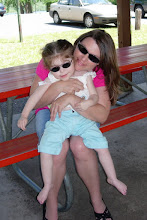Fear of Attachment
>> Monday, August 31, 2009

I recently ran into a friend of mine and our conversation seemed to focus on the fear of attachment. I can completely identify with this fear since I had a fear of getting to close to Emily when she was a newborn and so sick. For some reason I was so afraid of loving her because we weren't even sure that she was going to live long. All of the possible diagnosis that we were told for her only had her living until the age of two. I was so afraid that if I loved her I would lose her and I did not think I could survive that kind of pain.
They are many other ways people can fear attachment. I have seen it happen in families where their are children from a previous marriage brought together by two people. It is feared by the grandparent of step-grandchild that the marriage might not last and they will no longer be able to see that step-grandchild.
Fear happens when a couple is trying so hard to have a baby and with each pregnancy it ends in sadness of a lost child. Fear also happens when a couple is trying so hard to adopt and as they get word that their new baby has been born it is crushed by the news of the mother decided to keep him/her. Fear also happens when a child is diagnosed with a disease and you know that their time on earth is limited, but you don't know for how long.
So why is it that we are so consumed with fear in this world? How can we change things? Well, I don't have the answer to that question, but I have some help. We must change the way we think about life. We need to appreciate every waking moment we have with each other and with the ones we love. We must remember to cherish every day with each other and turn the rest over to the universe. Once we begin to let go, we open ourselves up to receive. Don't let you life be consumed with fear, let it go and see what happens.










